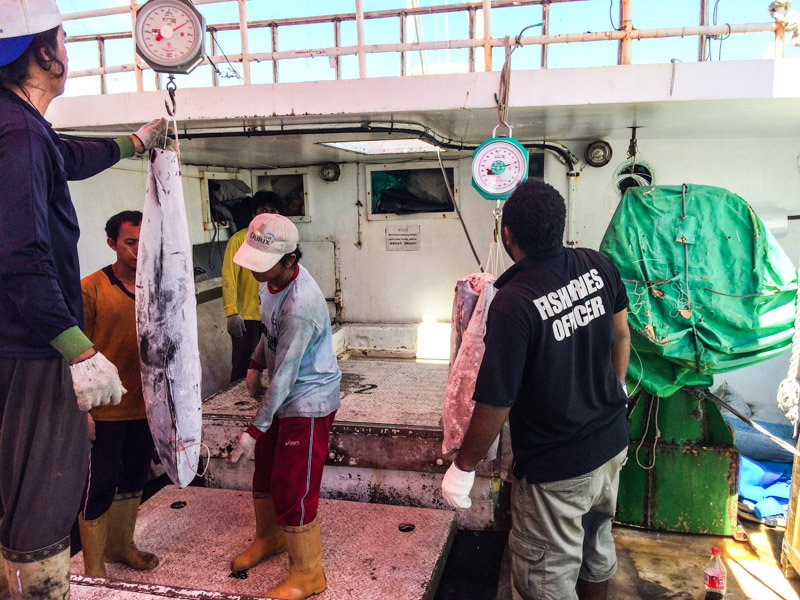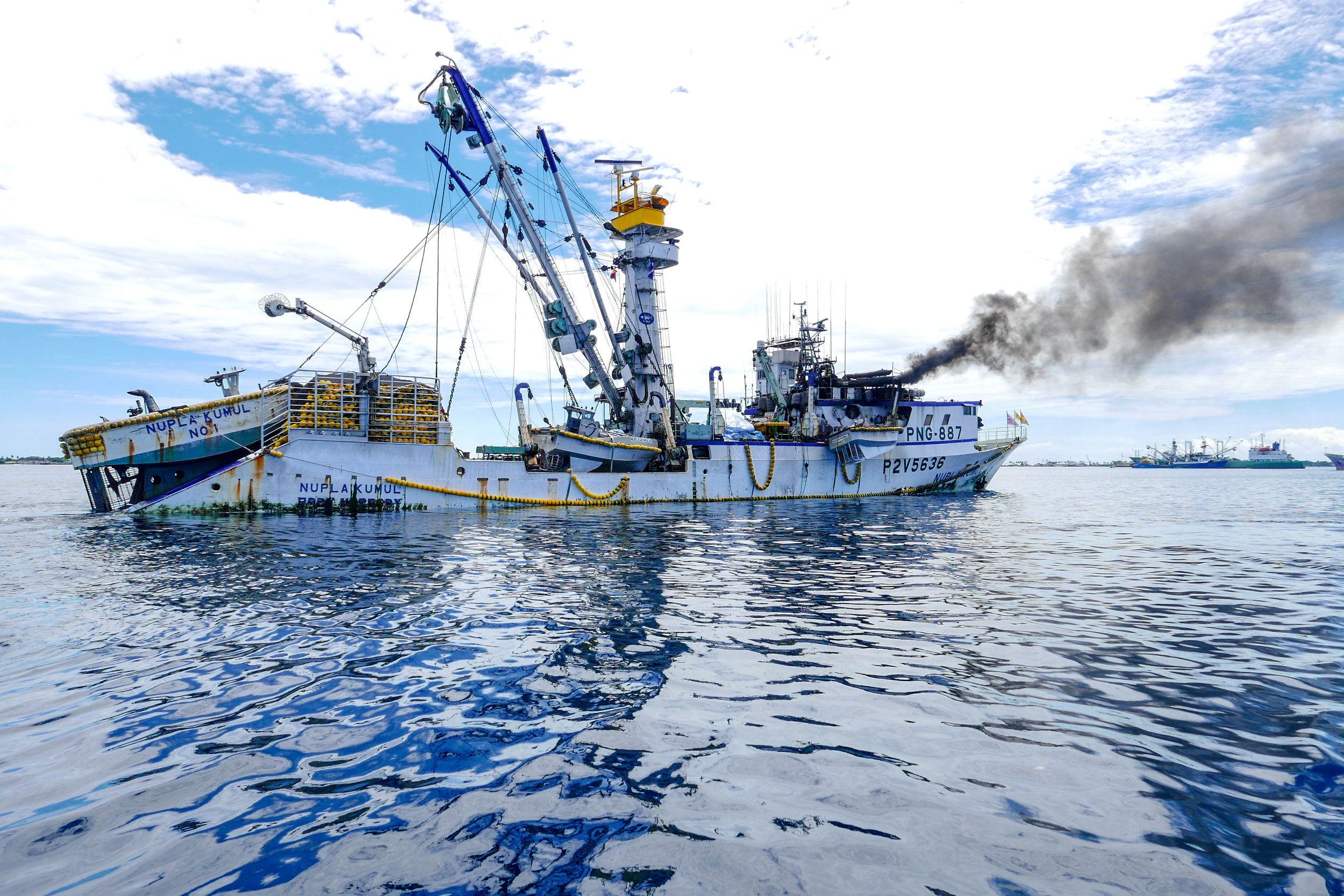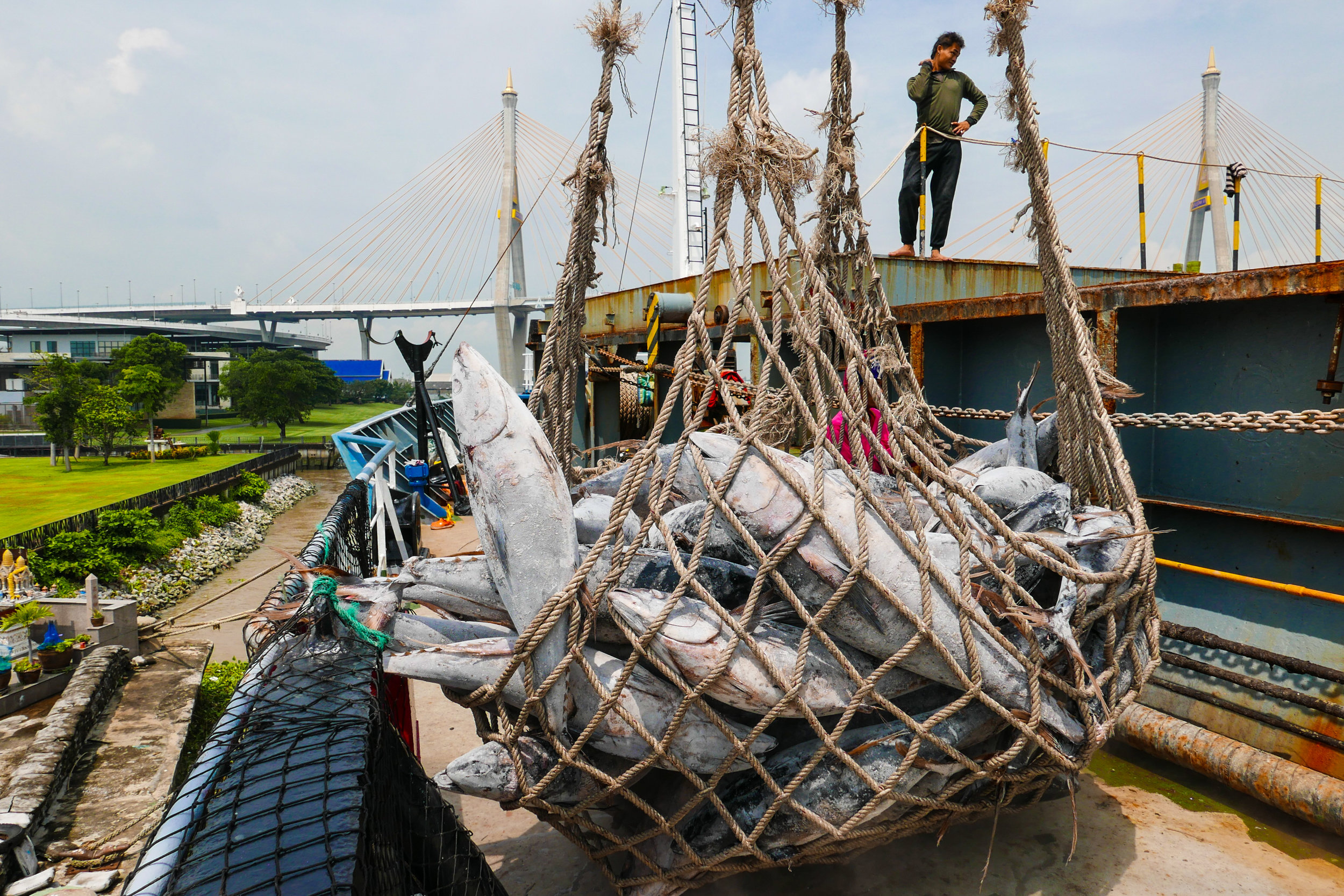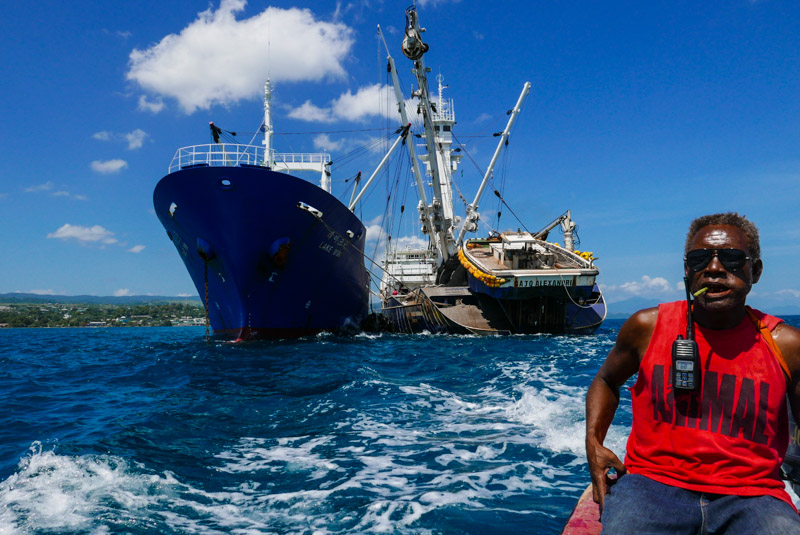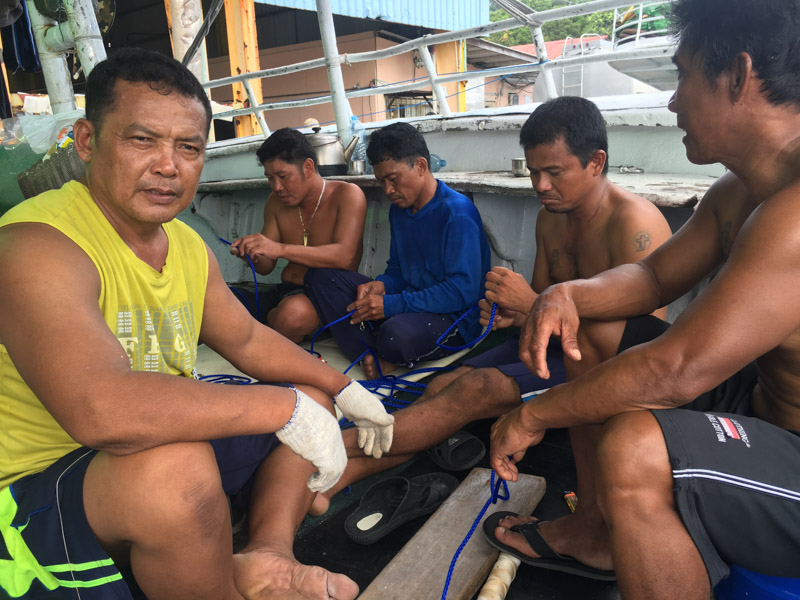A recent and long overdue set of international guidelines on catch documentation schemes was adopted by the FAO Council in July 2017. My friend and colleague Gilles Hosch, did a thorough analysis of this document and its implications. It was published by Infofish magazine, and I quote below some of the key parts.
Following extensive stakeholder consultations (in which we participated) on how to prevent illegally harvested fish from slipping into global food supply chains, the Food and Agriculture Organisation (FAO) came up with new Guidelines which provide formalised guidance as to what Catch Documentation Schemes are, their aims, and how they should be designed and operated. The Guidelines could now provide a first step in the development of a more precise benchmarking tool for CDS.
Today, there are four CDS in existence. Three of these are multilateral CDS operated by Regional Fisheries Management Organisations (RFMOs), and one is a unilateral CDS operated by the European Union (EU) in its capacity as a market State.
Catch Documentation Schemes are a politically sensitive topic owing to their trade-related nature and their potential to impact and disrupt trade in fisheries commodities between trading partners and nations. With this in mind, the resulting Guidelines represent a cautious first step in describing the scope and nature of CDS, their objective, and laying out general principles and functional elements around which CDS ought to be built.
The objective of the Guidelines is
“to provide assistance to states, regional fisheries management organisations, regional economic integration organisations and other intergovernmental organisations when developing and implementing new CDS, or harmonising or reviewing existing CDS.”
This confirms that CDS can be developed through either multilateral or unilateral enterprise.
The term ‘CDS’ is defined as follows;
“Catch Documentation Scheme” means a system with the primary purpose of helping determine throughout the supply chain whether fish originate from catches taken consistent with applicable national, regional and international conservation and management measures, established in accordance with relevant international obligations, hereinafter referred to as “CDS”.
CDS are thus systems spanning the entire supply chain, allowing the industry for ascertaining the legal origin of the product throughout all stages of production.
Six basic principles and their application
The Guidelines enunciate a range of basic principles that should be followed when developing CDS, namely: a) be in conformity with the provisions of relevant international law; b) not create unnecessary barriers to trade; c) recognise equivalence; d) be risk-based; e) be reliable, simple, clear and transparent; and f) be electronic, if possible.
Harmonisation of CDS is a goal that may be pursued in the future. This particular point, explicitly mentioned in the objective of the Guidelines, finds resonance in the principle that equivalence (between schemes) should be recognised.
In addition to the notions of harmonisation and equivalence, the six principles introduce the important ideas of reliability – interpreted to mean that a CDS ought to be designed in a way that it is able to effectively achieve its objective – and transparency. Transparency is increasingly gaining traction in supply chain management, not only for monitoring and compliance purposes, but also serving the commercial goal of building consumer trust through the marketing of products claiming social and environmental responsibility; such claims may be more easily verified through ever more transparent and verifiable sourcing frameworks. Limiting the risk of reputational damage is part of private sector interests in pushing for more supply chain transparency, which will in turn facilitate the development and operation of future CDS.
The Guidelines lay out the de facto objective of a CDS in the following manner:
“Every effort should be made to ensure that CDS are only implemented where they can be an effective means to prevent products derived from IUU fishing from entering the supply chain.”
This mirrors the objective pursued through trade-related measures as provided in the 2008 FAO International Guidelines for the Management of Deep-Sea Fisheries in the High Seas: “adopt […] measures to prevent products from IUU DSFs from entering international trade.” It also reflects the provisions of the 2001 FAO International Plan of Action to Combat, Deter, and Eliminate IUU Fishing on the same topic: “[…] to prevent fish caught by vessels identified […] to have been engaged in IUU fishing being traded or imported into their territories.”
The notion that a CDS must be able to effectively prevent IUU-derived product from entering the supply chain is key, and must be emphasised. In other words; if mechanisms inherent in the CDS do not allow for the detection of IUU fishing operations, and IUU-derived products are able to gain certification and to migrate as legally certified products along supply chains towards their end-markets because of this, then the CDS cannot contribute significantly to eliminating IUU fishing. The capacity of the CDS to detect (and eliminate) fraud at the beginning of the supply chain is key, and ought to precede the decision of whether a CDS is an appropriate tool to implement or not.
With regards to the CDS objective, the Guidelines also provide that CDS should only be implemented “from within the context of an effective fisheries management regime”. This consideration is critical, since the relative lack of regulatory substance regarding the exploitation of given stocks implies a relative lack of substrate for a CDS to act upon.
Another element of critical importance regarding the principles and their application is the development and use of secure electronic systems for the operation of CDS in order to forego the risk of falsification. The Guidelines provide key attributes and functions that electronic systems should be endowed with, including the following:
- Serve as the mechanism for issuance and validation of catch certificates
- Function as the repository of catch certificate and supply chain data;
- Allow verification of information;
- Ensure that accurate and verifiable information is available along the supply chain;
- Be based on international standards for information exchange and data management;
- Minimise the burden on users;
- Provide functions for uploading scanned documents;
- Provide functions for running data queries;
- Define roles and responsibilities for data input and validation;
- Provide secure access via logins and passwords; and
- Define system levels that individual users or user groups have access to.
Certificates should hence be issued and validated through an electronic system, which serves both CDS functions of data generator/validator and data warehouse (points 1 and 2 above) allowing data to be linked (point 5) and to remain available and accessible along the entire supply chain (point 4).
This embodies what is more commonly referred to as a central registry (or central data repository). The central registry is the centrepiece that provides a basis for effective supply-chain traceability, and allows a CDS to effectively meet its objective. It is this instrument that enables meaningful verification of information (point 3), either in manual or automated fashion, along the entire supply chain from harvesting of fish to the final point of importation of fisheries products, and provides the ability to detect (and to deny) laundering attempts. In the absence of a central registry, verification of information becomes difficult, and in longer supply chains, operators and regulators may become unable to establish the validity of the paperwork accompanying consignments delivered to premises, or – in the case of authorities – imported into territories. Both CCAMLR and ICCAT operate such electronic central registries today.
Cooperation, notification, functions and standards
Other attributes and functions provided for in the Guidelines – generally relating more to CDS development and implementation modalities –include the following;
- States should seek wide multilateral engagements in the development and implementation of CDS;
- Cost-effectiveness considerations should guide […] the development and implementation of CDS;
- Multilateral or regional CDS are preferred;
- The objective of a CDS should be clearly defined;
- The CDS should be designed to meet its objective;
- Applicable Harmonised System (HS) classifications should be listed;
- In the validation process, different roles of relevant states to authorise, monitor and control fishing operations and verify catch, landing, and trade should be fully recognised;
- Validation of catch documentation information should be done by a competent authority;
- All relevant states could take part in the verification of information in the catch documentation
It emerges that multilateral approaches are preferred in developing CDS (points 1 and 3).
Points 4 and 5 – notwithstanding their obviousness and logic – are important also. With a single exception, none of the existing CDS clearly define the objective of the scheme, and are hence prone to meander, to add functions not in support of the (putative) objective, and therefore become more burdensome, more ineffective and less cost-effective over time. CDS functions can only be developed effectively when an agreed and clear objective is being pursued.
The definition of the HS categories (point 6) to which the scheme applies is also important, and sometimes embodies an alienating factor for fisheries practitioners. However, since the CDS is a trade-based tool, and is largely implemented through the action of border control agents and the customs agencies they respond to, the translation of fish species and fish products into customs codes is of essence to ensure the smooth implementation of envisaged controls at the level of international trade. This, in turn, assists in identifying the need for developing more detailed HS codes in specific fisheries and supply chains over time.
Another key point relates to the state-types responsible for verifications and validations of certificates (points 7 and 9). Under all currently existing CDS, and with few exceptions, the flag state has the exclusive competence for the verification and validation of catch certificates. However, under international law, both the coastal state and the flag state have shared responsibility to oversee fishing operations in the EEZ.
Expanding verification and validation competence in future systems serves the purpose of limiting the primacy of flag state validation in the CDS landscape. Such primacy is inconsistent in the context of a trade-based tool, bearing in mind the historically pervasive and documented failures of flag states to discharge their duties under international law.
Trade-based and port-state measures – the latter enshrined in the 2009 Agreement on Port State Measures to Combat, Deter, and Eliminate IUU Fishing (PSMA) – ought to be understood as efforts to overcome the shortcomings of flag state jurisdiction and enforcement, and to spread duties and responsibilities for combatting IUU fishing more evenly among concerned state parties. One consideration, inter alia, regarding expanded verification and validation responsibilities under a CDS would be for coastal states to be endowed with a statutory catch certificate validation function for catches made in their EEZ – in cases where the flag and the coastal state are not the same.
Finally, an act of validation of catch documentation (i.e. a certificate) by a designated competent authority is a hallmark of catch documentation schemes (point 8). This has implications as to whether the impending US Seafood Import Monitoring Program (SIMP) – due to enter into force in January 2018 – will qualify as a CDS system, or will eventually be relegated into a category of trade-based measures of its own standing. The SIMP does not foresee the development and implementation of a certification system in the classic CDS sense, and validations of scheme-specific paperwork will not normally be provided by competent authorities along the supply chain upstream of final exportation to the US market. The onus to collect supply-chain information establishing the supposed legality of imported products would largely rest on importers under the SIMP.
Outlook
Seventeen years after the coming into existence of the first CDS globally at CCAMLR, the 2017 FAO CDS Guidelines enter the spotlight and provide much needed and formalised guidance as to what a CDS is, what it is aiming to achieve, and how these schemes should be designed and operated. This should help in dispelling general misconceptions about what the functions and objectives of these schemes are, and should also be instrumental in better focusing current efforts at RFMO level to develop such schemes.
The Guidelines could also embody a first step in the direction of developing a more encompassing and precise CDS benchmarking tool, which would allow assessing and revising existing schemes against an agreed standard and on the basis of which new schemes could be developed faster, more effectively, and with much more confidence

